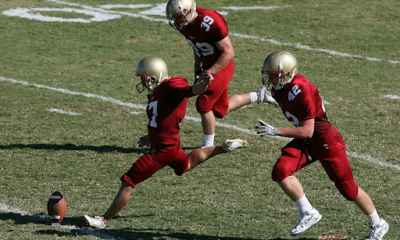
American football, with its blend of strategy, athleticism, and spectacle, has long been a cornerstone of American sports culture. Over the years, it has undergone significant development, shaping not only the landscape of physical sports but also leaving its mark on the burgeoning realm of esports. From pioneering broadcasting techniques to strategic gameplay, American football has influenced esports in various ways, contributing to its growth and evolution.
Evolution of American Football
American football traces its origins to rugby and soccer, evolving in the late 19th century as colleges sought to create a distinctively American sport. With its structured gameplay, physicality, and strategic elements, it quickly gained popularity across the nation. From its early days of leather helmets and rudimentary rules, American football underwent continuous refinement, with innovations in equipment, tactics, and organization.
Key milestones in its development include the establishment of the National Football League (NFL) in 1920, the introduction of the forward pass, the evolution of offensive and defensive strategies, and advancements in player safety. The sport’s growth was further propelled by television broadcasting, which brought the game into the homes of millions, transforming it into a national obsession.
Broadcasting and Production Value
One of the defining characteristics of American football broadcasts is the utilization of multiple camera angles to capture the action from various perspectives. From aerial shots showcasing the expansive field to close-ups highlighting intricate player movements, these dynamic camera angles provide viewers with a comprehensive understanding of the game’s nuances. The ability to switch seamlessly between viewpoints adds depth and immersion to the viewing experience, allowing audiences to appreciate the athleticism and strategy inherent in each play.
Slow-motion replays have become a staple of American football broadcasts, offering viewers the opportunity to relive key moments in exquisite detail. Whether it’s a spectacular touchdown catch or a bone-jarring tackle, slow-motion replays allow fans to dissect the finer points of the game, gaining a deeper appreciation for the skill and precision exhibited by players. By enhancing the dramatic impact of pivotal moments, slow-motion replays add a layer of excitement and intrigue to the viewing experience, keeping audiences engaged from start to finish.
Esports broadcasts employ dynamic camera control to capture the fast-paced action unfolding within virtual arenas. Similar to American football, multiple camera angles are used to provide viewers with comprehensive coverage of the gameplay, which is essential to succeed in dota betting, allowing them to follow the action from different perspectives. Whether it’s a strategic overview of the battlefield or a close-up of individual player movements, dynamic camera control enhances the visual appeal of esports broadcasts, immersing viewers in the virtual world.
Esports broadcasts integrate real-time data and analysis into the viewing experience, providing viewers with insights into player performance, team strategies, and in-game statistics. From on-screen overlays displaying kill counts and resource levels to post-match analysis segments breaking down key moments, these informational enhancements enhance the analytical depth of esports broadcasts, empowering viewers to better understand the intricacies of the games being played. By incorporating data-driven insights into the viewing experience, broadcasters enhance the educational value of esports broadcasts, helping fans develop a deeper understanding of the games they love.
Strategic Depth
American football teams boast extensive playbooks comprising a myriad of offensive and defensive strategies designed to outmaneuver their opponents. From spread offenses to blitz-heavy defenses, coaches meticulously craft game plans tailored to exploit the strengths and weaknesses of their adversaries. The strategic diversity inherent in American football’s playbook empowers teams to adapt their approach based on situational factors, fostering a dynamic and ever-evolving competitive landscape.
Success in American football hinges on the ability to make real-time adjustments in response to unfolding circumstances. Whether it’s shifting defensive formations to counter an opponent’s offensive scheme or exploiting mismatches to gain a strategic advantage, coaches and players must remain adaptable and proactive throughout the game. The capacity to recognize and exploit strategic opportunities in the heat of competition separates the elite from the merely competent, showcasing the importance of strategic acumen in American football.
Esports titles feature a diverse array of characters or champions, each with unique abilities and attributes. The strategic depth of esports is evident in the selection and composition of these heroes or champions, as teams must carefully curate their lineup to synergize with their overall strategy and counter the strengths of their opponents. The strategic complexity of hero/champion selection adds an additional layer of depth to esports competitions, requiring teams to balance individual preferences with strategic considerations to achieve optimal results.
Many esports titles revolve around the concept of map control and objective play, where teams vie for control of key areas and objectives within the game world. The strategic depth of esports is on full display as teams formulate intricate strategies to secure map control, execute coordinated pushes, and capitalize on strategic objectives. Whether it’s capturing control points in a first-person shooter or securing objectives in a multiplayer online battle arena (MOBA), the strategic nuances of map control and objective play are central to the competitive dynamics of esports.
Team Dynamics and Communication
In American football, teams are bound by a shared purpose—to outmaneuver the opposition and secure victory. This unity of purpose fosters a sense of camaraderie and mutual accountability among players, driving them to work collaboratively towards a common goal. Whether on offense, defense, or special teams, players must synchronize their efforts and trust in their teammates to execute their respective roles effectively.
Each player in American football occupies a specific position on the field, with distinct responsibilities and roles within the team’s overall strategy. From quarterbacks orchestrating the offense to linebackers anchoring the defense, positional awareness is essential for ensuring smooth coordination and cohesion. Players must maintain clear lines of communication and anticipate each other’s movements to react swiftly to changing situations and capitalize on strategic opportunities.
Esports teams typically consist of players specializing in different roles or positions within the game. Whether it’s a support player providing assistance to teammates or a carry player dealing damage and securing objectives, role specialization is essential for maximizing team effectiveness. Each player must understand their role within the team composition and collaborate closely with teammates to leverage their strengths and compensate for their weaknesses.
Esports teams must remain adaptable and flexible in the face of evolving strategies and unforeseen challenges. Players must be willing to adjust their tactics on the fly, shift roles as needed, and collaborate closely with teammates to overcome obstacles and seize opportunities. The ability to communicate effectively under pressure and make split-second decisions is a hallmark of successful esports teams, enabling them to outmaneuver opponents and achieve their objectives.
Conclusion
The development of American football has left an indelible mark on the world of esports, influencing everything from broadcasting techniques to strategic gameplay. As esports continues to grow in popularity and reach, it will undoubtedly draw further inspiration from the rich legacy of American football, perpetuating a symbiotic relationship that enriches both domains. Whether on the gridiron or in the virtual arena, the spirit of competition, innovation, and camaraderie transcends boundaries, uniting fans and athletes in celebration of human achievement.









